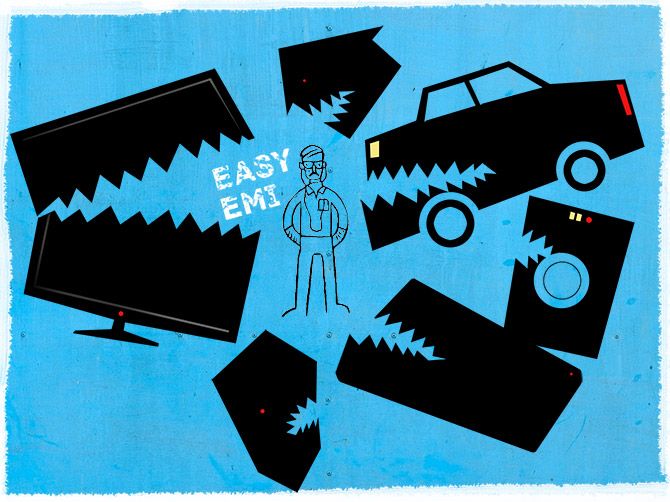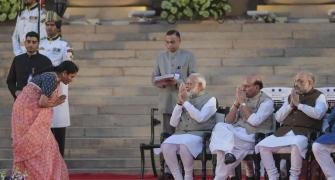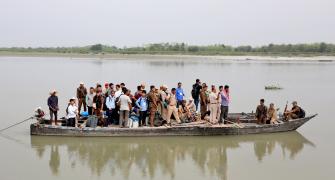'No one seems to have looked at the extent of money that is being borrowed by individuals, and the rising levels of household debt.'
'At their present rates of growth, personal loans in India could well become the largest category of bank credit in just two or three years,' cautions T N Ninan.
Illustration: Dominic Xavier/Rediff.com

We have heard these last few years about the twin-debt problem faced by companies and banks.
We've read reports like Credit Suisse's House of Debt, on companies that don't have the earnings to pay interest on debt, let alone the principal.
And, of course, we have read more than we would wish to about how banks have been writing off record sums of bad loans.
So far, though, no one seems to have looked at the extent of money that is being borrowed by individuals, and the rising levels of household debt.
Time to look at it when the consumption engine that has kept the economy going through a multi-year investment slowdown has stopped firing as before.
Individual or household financial stress is usually the result of lost jobs or livelihoods, and there is some of that.
Look at depressed farm incomes, the fate of Jet Airways, or the effects of demonetisation.
But there seems to be a deeper problem building up, one that is not linked to economic downswings or disruptions.
Personal debt has been climbing and we must ask whether the burden of repayment is eating into disposable incomes -- especially if loans taken for housing have to be repaid even when the housing project is stuck.
Take a look at the numbers.
Between 2013-2014 and 2017-2018, according to the Reserve Bank of India's Handbook of Statistics on the Indian Economy, personal loans given by banks went up in by 89% to Rs 19.1 trillion.
This, when private consumption increased by only 53%, and overall non-food credit went up by an even more sedate 39% per cent.
There was an increase of 82% in borrowing for housing, 54% for consumer durables, and 78% for vehicles.
The most striking was a 154% increase in 'other personal loans" even as credit card outstanding went up by an even bigger 176 per cent.
The only modest increase was for education loans (up about 16%).
These numbers on borrowings are compelling when placed against the figures for household savings, which in the three years to 2016-2017 went up by just 18%, while physical household savings actually declined, though fractionally.
The household figure for savings includes unincorporated enterprises, so the numbers are not strictly comparable.
Nevertheless, the growing tendency to borrow more to consume is clear: The ratio between borrowings and overall consumption (including of the daily necessities) moved up in four years from 15.6% to 19.3%.
That's just bank credit.
There is then the money that people borrow from non-banking financial companies, usually for housing and cars, but also for consumer durables and spending occasions like weddings.
RBI numbers suggest that banks account for only about two-thirds of household financing, and the overall financial liabilities of households went up by Rs 6.7 trillion in 2017-2018.
This was an astonishing 80% step up from the increase in (not total) liabilities of a year earlier.
India's household debt in relation to its GDP is low -- barely 11% -- compared to the other Brics countries: 17% in Russia, 26% in Brazil and 48% in China.
But loans have to be repaid out of disposable income.
This will be lower in India, where most people still live hand to mouth, than in the rest of Brics, which has per capita income about five times India's.
For that reason, straight comparisons with such countries on the levels of personal debt can be misleading.
That apart, at their present rates of growth, personal loans in India could well become the largest category of bank credit in just two or three years, replacing large industry and services which lead the tables now.
Bank credit to all of industry, for instance, grew just 7.3% in the four years to 2017-2018.
The financing of households is fine if incomes keep growing.
If not, high debt levels could begin to bite, and we will have a double whammy.










